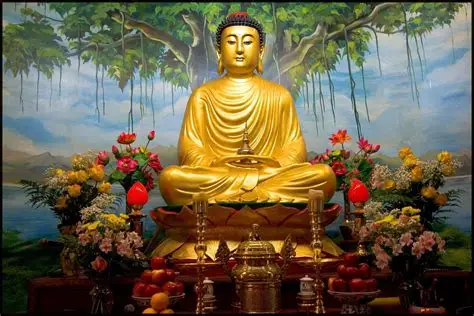India, the birthplace of Buddhism, hosts a rich tapestry of festivals that honor the life and teachings of Siddhartha Gautama—the Buddha. Buddhist Festivals in India are not just religious observances; they are spiritual journeys that blend devotion, community, and cultural heritage. Celebrated across monasteries, pilgrimage towns, and Buddhist circuits, these festivals offer travelers a chance to witness rituals, masked dances, chants, and serene ceremonies that reflect the essence of Buddhist philosophy.
Whether you’re a pilgrim seeking mindfulness or a traveler drawn to cultural depth, Buddhist festivals in India promise a soulful experience rooted in peace, compassion, and wisdom.
🕉️ 1. Buddha Purnima (Vesak)
Significance: Commemorates the birth, enlightenment, and Mahaparinirvana (death) of Gautama Buddha
When: Full moon day in April or May
Where Celebrated: Bodh Gaya, Sarnath, Kushinagar, Ladakh, Dharamshala, Arunachal Pradesh
Highlights:
-
Devotees offer prayers, light lamps, and chant sutras
-
Monasteries organize meditation sessions and dharma talks
-
Bodh Gaya sees massive pilgrim gatherings under the Bodhi Tree
-
Cultural programs, peace marches, and vegetarian feasts
Why Visit: It’s the most important Buddhist festival globally, and India’s sacred sites come alive with spiritual energy.
🧘 2. Hemis Festival, Ladakh
Significance: Honors Guru Padmasambhava, who introduced Tantric Buddhism to the Himalayas
When: June or July (5th lunar month of Tibetan calendar)
Where Celebrated: Hemis Monastery, Ladakh
Highlights:
-
Masked dances (Cham) depicting good vs evil
-
Monks wear elaborate costumes and perform sacred rituals
-
Thangka (sacred painting) of Padmasambhava is unveiled once every 12 years
-
Local crafts, music, and Ladakhi cuisine
Why Visit: A rare blend of mysticism, art, and Himalayan culture in a dramatic mountain setting.
🏞️ 3. Losar – Tibetan New Year
Significance: Marks the beginning of the Tibetan lunar calendar
When: February or March
Where Celebrated: Dharamshala, Sikkim, Arunachal Pradesh, Ladakh
Highlights:
-
Monasteries are decorated with prayer flags and butter lamps
-
Ritual dances, offerings, and family gatherings
-
Special dishes like khapse and thukpa are prepared
-
Monks perform purification rituals to ward off evil spirits
Why Visit: A vibrant cultural celebration that blends spirituality with community joy.
🏯 4. Thiksey Gustor Festival
Significance: Symbolizes the victory of good over evil and purification of the soul
When: October or November
Where Celebrated: Thiksey Monastery, Ladakh
Highlights:
-
Cham dances with masks and traditional music
-
Creation and destruction of a sacrificial effigy (symbolizing evil)
-
Monastic rituals and public blessings
-
Local markets and Ladakhi food stalls
Why Visit: A dramatic and spiritual spectacle in one of Ladakh’s most picturesque monasteries.
🕍 5. Tawang Torgya Festival
Significance: Celebrated to drive away evil spirits and bring prosperity
When: January
Where Celebrated: Tawang Monastery, Arunachal Pradesh
Highlights:
-
Monks perform colorful dances in elaborate costumes
-
Sacred chants and fire rituals
-
Community feasts and cultural performances
-
Display of traditional masks and thangkas
Why Visit: A rare glimpse into the spiritual life of the Monpa tribe and Himalayan Buddhist traditions.
🛕 6. Kalachakra Festival
Significance: A tantric initiation ceremony led by the Dalai Lama (held occasionally)
When: Irregular intervals (last held in Bodh Gaya in 2017)
Where Celebrated: Bodh Gaya, Amaravati, Dharamshala
Highlights:
-
Teachings on peace, compassion, and universal harmony
-
Mandala creation and dissolution
-
Thousands of monks and devotees gather from around the world
-
Meditation, discourses, and cultural exchange
Why Visit: A rare and profound spiritual event led by His Holiness the Dalai Lama.
🧳 Planning a Buddhist Festival Tour in India
🗺️ Suggested 10-Day Itinerary
Day 1–2: Arrive in Bodh Gaya → Visit Mahabodhi Temple → Attend Buddha Purnima rituals
Day 3–4: Travel to Sarnath → Explore Dhamek Stupa and museum
Day 5–6: Head to Kushinagar → Participate in Mahaparinirvana commemorations
Day 7–8: Fly to Ladakh → Attend Hemis or Thiksey Gustor Festival
Day 9–10: Optional extension to Tawang or Dharamshala for Losar or Torgya Festival
🏨 Where to Stay
-
Monastery Guesthouses: Peaceful and spiritual ambiance
-
Pilgrim Lodges: Budget-friendly and close to festival venues
-
Heritage Hotels: Restored havelis and colonial buildings near Buddhist sites
-
Eco-Stays: Sustainable accommodations in Himalayan regions
-
Luxury Retreats: Premium wellness resorts with meditation programs
📅 Best Time to Experience Buddhist Festivals
| Festival | Months | Region |
| Buddha Purnima | Apr–May | Bodh Gaya, Sarnath, Kushinagar |
| Hemis Festival | Jun–Jul | Ladakh |
| Losar | Feb–Mar | Dharamshala, Sikkim, Arunachal Pradesh |
| Thiksey Gustor | Oct–Nov | Ladakh |
| Torgya Festival | Jan | Tawang |
| Kalachakra | Irregular | Bodh Gaya, Amaravati, Dharamshala |
💡 Travel Tips
-
Dress modestly and respect monastic customs
-
Avoid loud behavior and photography during rituals
-
Carry warm clothes for Himalayan festivals
-
Book accommodations and permits in advance
-
Engage with monks and locals for deeper insights
🌟 Why Attend Buddhist Festivals in India?
-
Spiritual Enrichment: Experience mindfulness, compassion, and inner peace
-
Cultural Immersion: Witness ancient rituals, dances, and community celebrations
-
Scenic Settings: From riverbanks to mountain monasteries, the locations are breathtaking
-
Global Community: Meet pilgrims and seekers from around the world
-
Transformative Travel: These festivals offer more than sightseeing—they offer soul-searching
Whether you're a spiritual seeker, a cultural enthusiast, or a mindful traveler, Buddhist Festivals in India invite you to celebrate peace, wisdom, and the timeless legacy of the Buddha.



